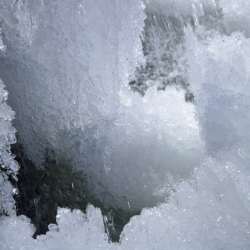
The novel technique boosts the data about height changes that are gathered by radar instruments on satellites. Known as swath altimetry, it permits researchers to see broader regions of the ice sheets in any one pass overhead, and at a much finer scale. Areas of melting or accumulation can now be investigated with 100 times more information.
The new approach has so far been applied only to a small set of data acquired by the Cryosat spacecraft. But the intention eventually is to go back and reprocess the entire six-year archive of observations made by this European Space Agency (Esa) mission.
Swath altimetry will totally change the way scientists are able to study some phenomena, says Dr Noel Gourmelen from Edinburgh University, UK.
"The temporal and spatial improvements mean that if we have a surge in a glacier, it now makes it much easier to look at where that event initiated. Did the whole glacier start moving at once? Or did the change start at the ocean, meaning the ocean was having an impact on the glacier? Or perhaps it was further back, meaning different processes were involved. Now, we’re better able to trace the history and the causes of the surge," he told BBC News.
